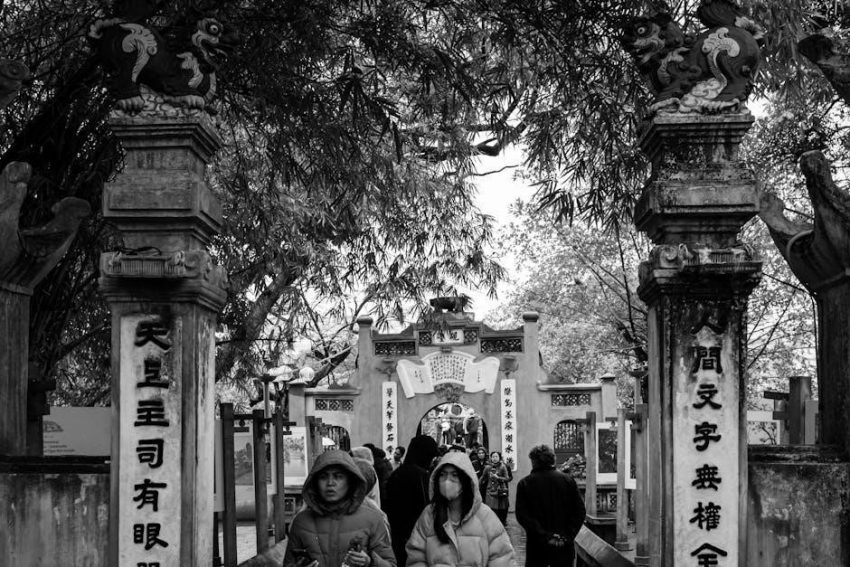The Fight Club screenplay, written by Jim Uhls and directed by David Fincher, is a cinematic masterpiece adapted from Chuck Palahniuk’s 1996 novel․ This iconic script delves into themes of toxic masculinity, consumerism, and rebellion, resonating deeply with modern audiences․ The Fight Club PDF is widely available for download, offering insights into the film’s psychological depth and its enduring influence on pop culture․
1․1 Background and Historical Context
The Fight Club screenplay, adapted from Chuck Palahniuk’s 1996 novel, was brought to life by screenwriter Jim Uhls and director David Fincher in 1999․ Set against the backdrop of late-1990s America, the story critiques modern society’s consumerism and toxic masculinity․ The film’s release coincided with growing discussions about identity and rebellion, resonating with audiences seeking unconventional narratives․ The Fight Club PDF script captures this gritty, subversive tone, providing a raw look into themes that defined its era and continue to influence contemporary culture․
1․2 Importance of the Script in Modern Cinema
The Fight Club screenplay holds significant importance in modern cinema for its bold narrative structure and exploration of themes like toxic masculinity and consumerism․ Directed by David Fincher, the film became a cultural phenomenon, influencing countless works in cinema and pop culture․ The script’s availability as a Fight Club PDF has made it a valuable resource for filmmakers and writers, offering insights into its iconic dialogue and character development․ Its enduring relevance underscores its impact on contemporary storytelling and cinematic innovation․
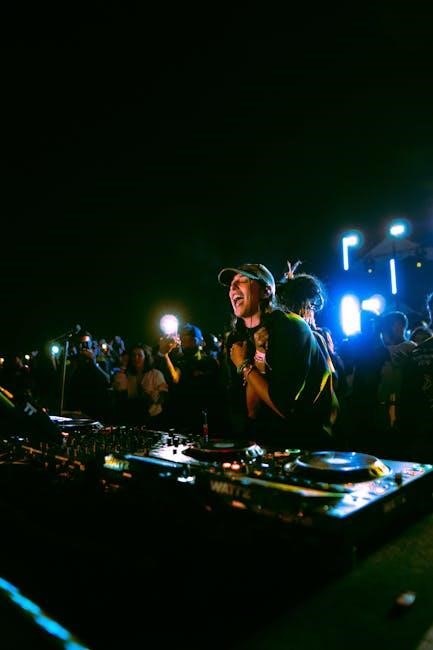
Origins of the Fight Club Script
The Fight Club script, written by Jim Uhls, is based on Chuck Palahniuk’s 1996 novel․ The shooting script, completed on April 18, 1998, was directed by David Fincher․ This PDF document is widely available for filmmakers and writers to analyze․
2;1 The Novel by Chuck Palahniuk
Chuck Palahniuk’s 1996 novel, Fight Club, is a dark exploration of modern society, delving into themes of toxic masculinity, consumerism, and rebellion․ Its subversive narrative follows an unnamed protagonist struggling with identity and societal expectations․ The novel’s raw, edgy style captivated readers, becoming a cult classic․ Palahniuk’s vivid storytelling laid the foundation for the screenplay, translating seamlessly into a cinematic experience․ The novel’s success can be attributed to its unflinching critique of contemporary culture and its ability to resonate with audiences seeking something bold and unconventional․
2․2 Adaptation into a Screenplay by Jim Uhls
Jim Uhls’ screenplay adaptation of Fight Club masterfully captures the essence of Palahniuk’s novel while tailoring it for the screen․ Uhls preserved the dark humor, subversive themes, and complex narrative structure, ensuring the story’s intensity remained intact․ He skillfully handled the non-linear storytelling and the dual identity of the protagonist, creating a script that was both visually and emotionally compelling․ Uhls’ collaboration with director David Fincher ensured the adaptation stayed true to the source material while enhancing its cinematic potential․ His work laid the groundwork for the film’s critical acclaim and cult status․
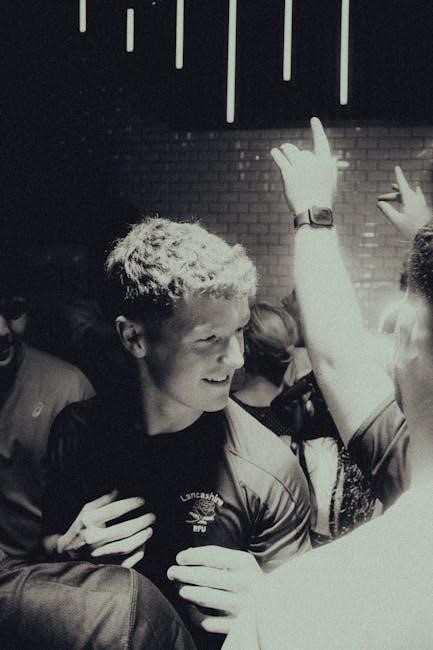
Key Themes in the Fight Club Script
The Fight Club script explores toxic masculinity, consumerism, rebellion, and identity, offering a scathing critique of modern society’s superficiality and the search for meaning in chaos․
3․1 Toxic Masculinity and Its Implications
The Fight Club script delves into toxic masculinity, exploring themes of aggression, dominance, and the rejection of emotional vulnerability․ The narrator’s inner turmoil and Tyler Durden’s chaotic persona embody the destructive aspects of traditional masculine ideals․ The story critiques societal expectations of men, highlighting how these norms lead to alienation and violence․ Through its characters, the script portrays the dangers of unchecked masculinity, revealing its connection to rebellion, control, and self-destruction․ This theme remains central to the narrative’s exploration of modern male identity and its societal implications․
3․2 Consumerism and Modern Society
The Fight Club script critiques modern society’s obsession with consumerism, highlighting the emptiness of materialism․ The narrator, suffocated by corporate culture and meaningless possessions, embodies the alienation of a consumer-driven world․ Tyler Durden’s rejection of societal norms and embrace of chaos reflects a rebellion against the commodification of life․ The script portrays a society where people are defined by what they own, rather than who they are, leading to a void that violence and anarchy attempt to fill․ This theme resonates with contemporary critiques of capitalism and consumer culture․

Main Characters in the Fight Club Script
The Narrator, an unnamed protagonist, and Tyler Durden, his volatile alter ego, drive the story․ Their contrasting roles explore identity, rebellion, and psychological conflict․
4․1 The Narrator (Jack)
The Narrator, often referred to as Jack, is an unnamed protagonist suffering from insomnia and a sense of existential emptiness․ He feels disconnected from modern society, grappling with consumerism and a lack of purpose․ His life changes when he meets Tyler Durden, his alter ego, symbolizing his darker, rebellious impulses․ The Narrator’s journey explores themes of identity, toxic masculinity, and societal alienation, making him a complex and relatable character․ His struggle between passivity and rebellion drives the story’s psychological depth and tension, creating a compelling narrative dynamic․
4․2 Tyler Durden
Tyler Durden is the enigmatic and charismatic alter ego of the Narrator, embodying rebellion and anarchy․ He represents a rejection of societal norms, advocating for chaos over consumerism․ As the founder of Fight Club and Project Mayhem, Tyler symbolizes liberation from modern life’s constraints․ His philosophy, “You are not a beautiful and unique snowflake,” challenges individualism and conformity․ Tyler’s influence grows, but his true nature remains mysterious, blurring the lines between reality and illusion․ His character serves as both a catalyst for change and a symbol of the Narrator’s inner turmoil․

The Fight Club Phenomenon
Fight Club became a cultural sensation, sparking debates on toxic masculinity and consumerism․ Its themes of rebellion and resistance resonated, inspiring underground movements and philosophical discussions globally․
5․1 Underground Fight Clubs
The Fight Club script portrays underground fight clubs as secret, illicit gatherings where men engage in brutal, unregulated combat․ These clubs operate outside societal norms, often in derelict locations, symbolizing rebellion against modern constraints․ They emerge as a response to consumerism and emasculation, offering a raw, primal outlet for frustration․ The script highlights how these clubs spread rapidly, evolving from small, exclusive groups into a broader, chaotic movement․ Their existence challenges traditional societal structures, embodying themes of resistance and psychological liberation․
5․2 The Spread of the Movement
The Fight Club script depicts the rapid proliferation of the movement, transcending its underground origins․ Through word-of-mouth and symbolic gestures, the ideology gains momentum, resonating with disenchanted individuals․ The clubs multiply, attracting diverse followers who embrace the anti-consumerist, anti-establishment ethos․ Project Mayhem emerges as the movement’s chaotic extension, targeting societal norms․ The script captures how the phenomenon spreads virally, reflecting a deeper cultural frustration․ Its growth mirrors the narrator’s internal turmoil, symbolizing rebellion against modern alienation and superficiality․

Iconic Scenes from the Fight Club Script
Fight Club’s iconic scenes, like the first fight and the plane confrontation, define its raw, rebellious tone, capturing the narrator’s descent into chaos and Tyler’s rise․
6․1 The First Fight Between Jack and Tyler
The first fight between Jack and Tyler in the Fight Club PDF script is a pivotal moment, marking the birth of their chaotic relationship․ It occurs in a dimly lit parking lot, driven by Jack’s frustration with his mundane life․ The raw, unfiltered aggression of this scene sets the tone for the script’s exploration of toxic masculinity and rebellion․ The fight is not just physical but emotional, symbolizing Jack’s internal struggle and his desire to break free from societal norms․ This scene is central to understanding the characters’ dynamics and the film’s themes․
6․2 The Plane Scene
The plane scene in the Fight Club PDF script is a tense and symbolic moment that highlights the growing bond between Jack and Tyler․ The dimly lit cabin creates an atmosphere of camaraderie, where Tyler’s charisma and confidence draw Jack in․ Their conversation touches on themes of rebellion and societal expectations, showcasing Tyler’s influence over Jack․ This scene serves as a catalyst for their partnership, setting the stage for the chaos that follows․ It underscores the script’s exploration of identity and male camaraderie․
6․3 The Chemical Burn Scene
The chemical burn scene is a pivotal and visceral moment in the Fight Club PDF script, showcasing Tyler Durden’s erratic behavior and control over the narrator․ When Tyler pours lye on the narrator’s hand, it symbolizes their twisted bond and the narrator’s submission to Tyler’s dominance․ The scene underscores themes of pain, loyalty, and the blurring of reality and illusion․ It’s a stark representation of Tyler’s influence, leaving a lasting mark on both the narrator and the audience, emphasizing the script’s exploration of psychological instability and power dynamics․
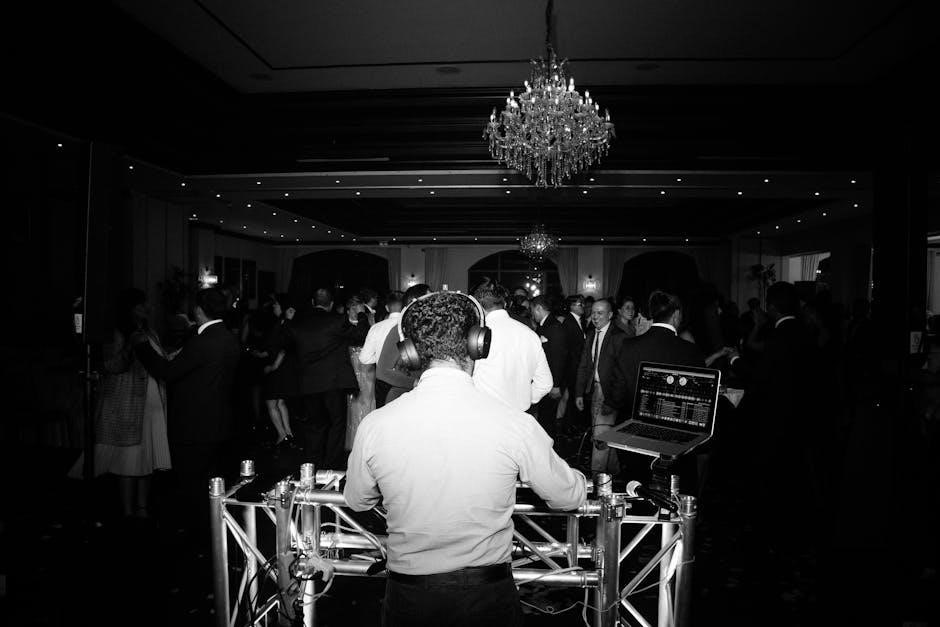
Memorable Quotes from the Fight Club Script
Fight Club’s script is packed with iconic lines that resonate deeply, such as “You are not a beautiful and unique snowflake” and “The first rule of Fight Club․”
7․1 “You Are Not a Beautiful and Unique Snowflake”
This iconic line, delivered by Tyler Durden, challenges societal norms by rejecting the idea of individual uniqueness․ It critiques modern culture’s obsession with self-importance, emphasizing conformity over true identity․ The quote has become a cultural touchstone, symbolizing rebellion against the pressures of societal expectations and the illusion of specialness․ Its raw honesty resonates deeply, reflecting the film’s themes of consumerism and identity crises․ This line encapsulates the script’s bold commentary on modern life, making it unforgettable․ Its impact lingers, sparking debates on individuality and conformity․
7․2 “The First Rule of Fight Club”
“The first rule of Fight Club is: you do not talk about Fight Club․” This line, spoken by the Narrator, encapsulates the secrecy and exclusivity of the underground movement․ It creates an air of mystery and intrigue, drawing viewers into the clandestine world․ The rule fosters a sense of brotherhood among members, emphasizing loyalty and trust․ Its repetition throughout the script underscores the themes of rebellion and subversion, making it one of the most memorable and quotable lines in cinema history, symbolizing the fight against societal norms․

The Fight Club Script and Cinematic Elements
The Fight Club script’s cinematic elements, including direction and visuals, play a crucial role in conveying its themes of rebellion and societal critique effectively․
8․1 Direction by David Fincher
David Fincher’s direction in Fight Club masterfully captures the film’s dark, subversive tone․ His meticulous attention to detail and use of shadows create a visually haunting atmosphere․ Fincher’s pacing builds tension, blending the narrator’s mundane life with Tyler Durden’s chaotic rebellion․ The film’s stark contrast between light and darkness symbolizes the protagonist’s internal conflict․ Fincher’s innovative camera angles and compositions amplify the emotional intensity, making the script’s themes of rebellion and self-destruction visceral and unforgettable․ His direction elevates the narrative, transforming it into a cinematic masterpiece․
8․2 Visual Style and Cinematography
The visual style of Fight Club is stark and haunting, with a dark, industrial aesthetic that mirrors the narrator’s inner turmoil․ High-contrast lighting and muted color palettes create a bleak, nihilistic atmosphere․ Cinematographer Jeff Cronenweth’s use of shadows and framing emphasizes the film’s themes of isolation and rebellion․ The camera’s low angles and close-ups amplify the intensity of fight scenes, while subtle visual distortions reflect the narrator’s unraveling psyche․ This blend of style and substance visually reinforces the script’s exploration of toxic masculinity and societal decay․
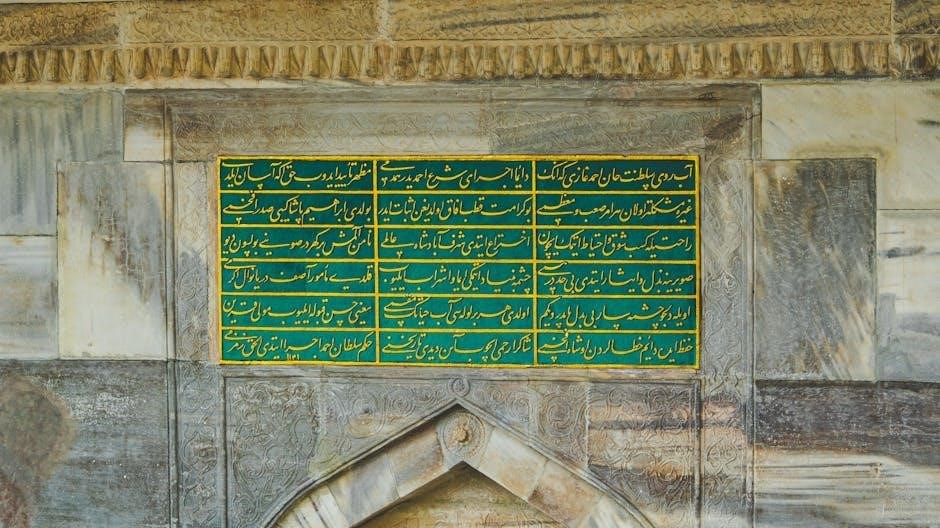
Analysis of the Fight Club Script
The script masterfully explores themes of toxic masculinity, consumerism, and rebellion through its dark narrative structure and psychological depth, resonating with audiences on a profound level․
9․1 Psychological Depth of Characters
The Fight Club script delves deeply into the psychological struggles of its characters, particularly the unnamed narrator and Tyler Durden․ The narrator, suffering from insomnia and existential crisis, embodies modern alienation․ His alter ego, Tyler, represents a rebellion against societal norms, exploring themes of identity fragmentation․ Their complex relationship reveals darker aspects of masculinity and the human psyche․ Supporting characters like Marla add layers of emotional complexity, enhancing the narrative’s psychological richness and resonance with audiences grappling with similar internal conflicts․
9․2 Symbolism and Metaphors
The Fight Club script is rich in symbolism, with fight clubs themselves serving as a metaphor for rebellion against consumerism and societal conformity․ The “space monkey” project symbolizes chaos and the breakdown of social order․ Marla’s character represents the narrator’s emotional instability and mortality․ The destruction of the narrator’s apartment mirrors his internal collapse, while Tyler Durden’s antics embody resistance to modern superficiality․ These symbols and metaphors layer the narrative, offering profound commentary on identity, rebellion, and the decay of modern society․

Cultural Impact of Fight Club
Fight Club sparked intense discussions on toxic masculinity, consumerism, and rebellion, becoming a cult classic․ Its influence is seen in pop culture, memes, and social movements, reflecting its enduring relevance and controversial themes․
10․1 Influence on Pop Culture
The Fight Club script has profoundly shaped pop culture, inspiring countless memes, fashion trends, and music references․ Its iconic scenes and quotes, like “You are not a beautiful and unique snowflake,” have become ingrained in modern discourse․ The film’s themes of rebellion and anti-consumerism resonate deeply, making it a cultural touchstone․ Its influence extends to TV shows, music videos, and even political movements, solidifying its status as a timeless commentary on modern society․ The script’s raw, unapologetic style continues to inspire creators and spark conversations globally․
10․2 Controversies and Criticisms
The Fight Club script has faced criticism for its depiction of graphic violence, with some arguing it glorifies brutality․ Critics also point to its portrayal of toxic masculinity, claiming it reinforces harmful gender stereotypes․ Additionally, the film has been accused of misogyny due to its limited and objectified female characters․ Some have criticized its handling of mental health issues, suggesting it sensationalizes conditions like dissociative identity disorder․ Furthermore, concerns have been raised about the film’s influence on real-life behavior, with reports of individuals emulating its extreme actions․ These controversies continue to fuel debates about the script’s societal impact and its perceived encouragement of anti-social behavior․
The Fight Club Script in PDF Format
The Fight Club script is widely available in PDF format, offering fans and filmmakers insight into its iconic dialogue and structure․ Ensure legal sourcing to avoid piracy issues․
11․1 Availability and Download Options
The Fight Club script in PDF format is widely accessible online, with numerous platforms offering free and paid versions․ Fans can download it from official script repositories, academic databases, or popular file-sharing sites․ Many websites provide direct links, while others may require sign-up or payment․ To ensure legality, it’s advisable to source the script from reputable platforms or purchase it from official distributors․ Searching with keywords like “Fight Club PDF script” often yields reliable results․ Always verify the source to avoid unauthorized downloads and support copyright laws․
11․2 Legal Considerations
Downloading the Fight Club PDF script may raise legal concerns, as it is protected by copyright laws․ Unauthorized distribution or downloading from unverified sources can lead to legal consequences․ It is essential to obtain the script legally, such as through official screenplay repositories or purchasing from authorized distributors․ Copyright infringement can result in fines or legal action․ Always ensure that you are accessing the script from legitimate sources to avoid violating intellectual property rights and support the creators of the work․
The Fight Club PDF script remains a powerful exploration of modern societal issues, leaving a lasting impact on cinema and cultural discourse with its raw, thought-provoking narrative․
12․1 Legacy of the Fight Club Script
The Fight Club PDF script has cemented its place as a seminal work in modern cinema, influencing storytelling and sparking debates on masculinity and consumerism․ Its unflinching dialogue and subversive themes continue to resonate, making it a cultural touchstone․ The script’s exploration of identity and rebellion has inspired countless adaptations and discussions, ensuring its enduring relevance in cinematic history․ Its raw, provocative narrative remains a benchmark for bold storytelling, leaving an indelible mark on both filmmakers and audiences alike․
12․2 Relevance in Contemporary Discussions
The Fight Club PDF script remains a focal point in modern conversations about identity, masculinity, and consumer culture․ Its themes of rebellion against societal norms and critiques of modern life continue to echo in discussions about mental health, individuality, and the search for meaning․ The script’s exploration of toxic masculinity and consumerism aligns with current debates on gender roles and capitalist critique, making it a timeless piece that challenges audiences to reflect on their place in society․ Its influence is evident in media, sparking ongoing dialogue about its provocative ideas and their relevance today․

